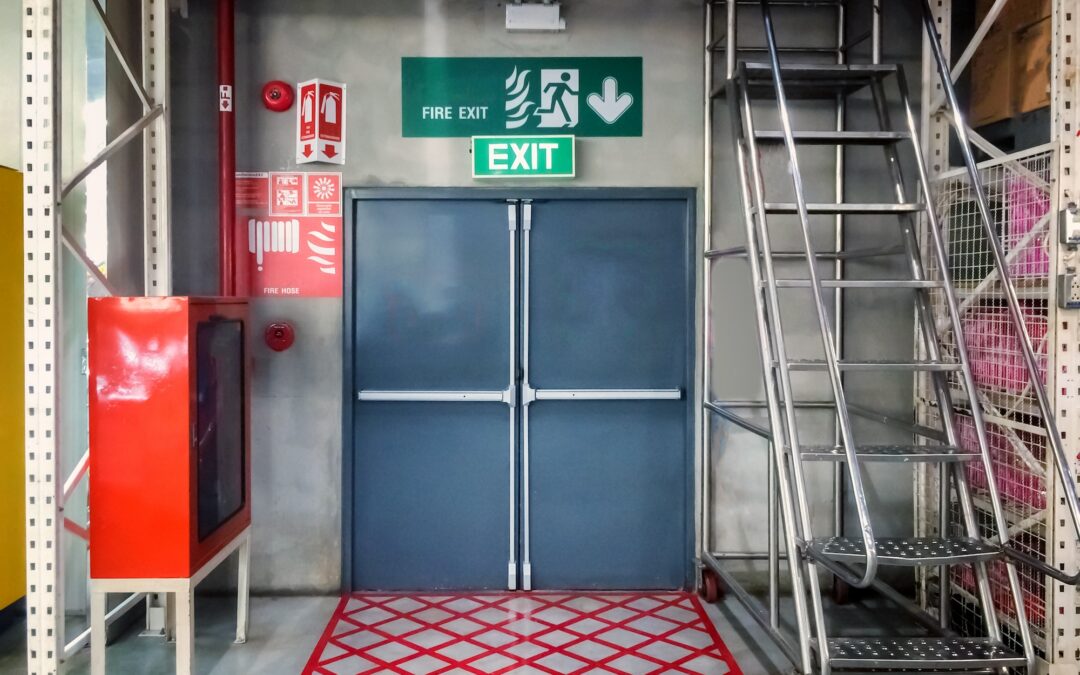How would you exit from your workplace during an emergency? In most cases, OSHA mandates there to be at least two emergency exit routes from every building. OSHA defines an emergency exit as “a continuous and unobstructed path of exit travel from any point within a workplace to a place of safety.” Emergency exit routes and exits must be clear of obstruction at
all times.
Discussion Points:
• Have a well-planned Emergency Action Plan (EAP)
• A minimum of two emergency exit routes from every building
• Exit routes must be clear of obstruction at all times
• Exit doors must open outwards; in the direction of flow of exiting traffic
• Check exits regularly throughout the day to ensure they are clear and easily accessible
Discussion:
There are three parts of an exit route: The exit access, exit, and exit discharge. The exit access is the part of the route that leads to the exit. The exit is separate from other areas to provide a protected way of travel to the exit discharge. The exit discharge leads directly to a walkway, public way, street, emergency shelter, or directly outside. Exit routes must be clear and unobstructed to allow for a quick and safe exit. First responders must have a method to enter and exit the building during an emergency, and people need a safe route to evacuate. Obstructing exit doors and routes become a safety hazard and may
create delay, panic, and confusion during an emergency. During an emergency, there would not be enough time to clear an emergency exit to escape a burning building.
OSHA Standards 1910.36 and 1910.37 discuss the design requirements, safeguards, maintenance, and operational features for exits. OSHA General Requirements apply to emergency exits for commercial and public buildings. This includes places of work. Exit routes must be kept free of clutter and have a passageway of at least 28-inches wide. Exit doors must
open out in the direction of exit travel. They should be side-hinged, kept unlocked from the inside, and not have chains or locks. Exits should be visible, have adequate lighting, and should be marked appropriately with an “Exit” sign and doors that do not exit should be marked with a “Not an Exit” sign to avoid confusion. Identifying and maintaining emergency exits and emergency exit routes are an important part of the workplace EAP. OSHA recommends workplaces with more than 10 employees develop an EAP. It’s important to maintain emergency exits for the safety of employees and should be checked regularly throughout the day to ensure they are clear and easily accessible.
As always, stay safe out there!


Recent Comments